STUDENTS PROJECTS
2010
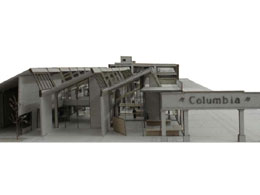
13 March, 2011
Columbia. Interventions for its reuse and re-establishment
Abandoned buildings and big areas overflowing with litter or a green place of music and entertainment, a space of historic memorial to residents of Nea Ionia?
Students: Iris Armao, Katerina Kalamara , Christina Lydaki
Supervisors: Μ.Nomikos, Μ.Dousi, G.Patrikios
University of Thrace
Presentation date: March 2010
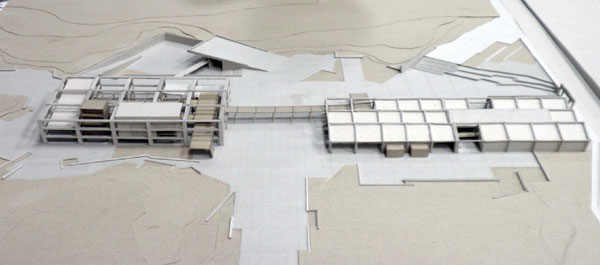
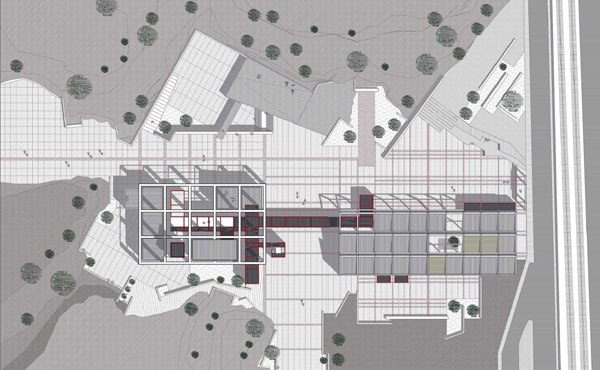
General site plan.
Aim of this project is to improve the quality of living of residents of Nea Ionia, through the exploitation of the abandoned industrial complex of Columbia. Observing the large non-constructed areas, as well as the "green areas" that can be shaped in a way to please one's sight and that are scattered in the urban web, we propose a plan which includes:
-Park and green paths.
-Opening up Podonifti river in his fundamental form.
-Regulations for circulation, in order to make residents and visitors access easy.
-Reuse of existing industrial groups, in order to become active cultural spaces.
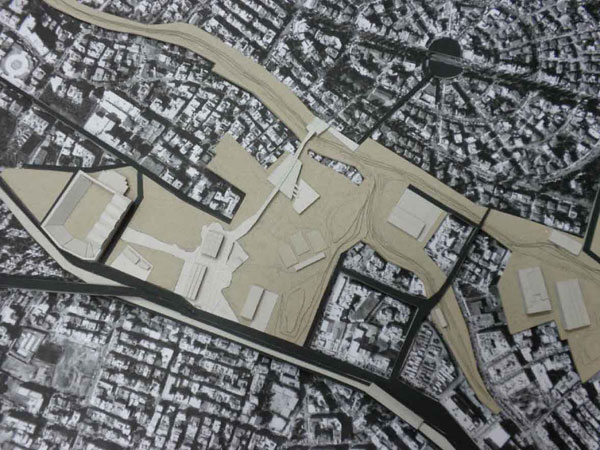
Model 1:2000, master plan.
Short historical retrospection.
In 1930, British Columbia selects Greece in order to extend her activity in Eastern Europe and Middle East. The industrial group occupies a space of 14 acres in the region of Perisos-Rizupolis on Heraklion avenue, and it is placed in a wider industrial area that is zoned between the Municipalities of Nea Ionia and Municipality of Athens (Ano Patisia).
It constituted a completed industrial unit, where its goal was the production and marketing of all kinds of echo and phono systems. Its main intention was to cover the complete spectrum of production, from raw material as the final product.
Its total buildings, which were manufactured in various periods of time, were 8 in total, following the technological evolution and the increasing needs of the factory. We can mark three phases that determine the operation and its form.
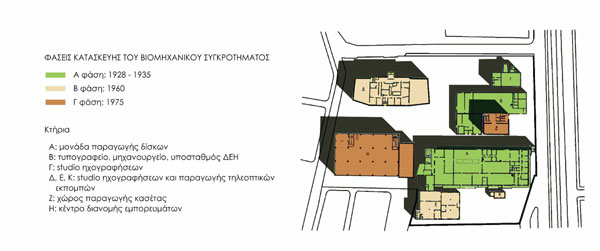
Periods while the complex was manufactured.
The productive process of the factory stops in 1991, where neither the householder company Thorn - EMI or the Greek state intent the progress of its development. In 2005 and with the intervention of Ministry of Culture, Building A and the central gate were characterized as monuments, because of their particular architecture, their industrial and historical importance, while the remain buildings were considered additions. Therefore, the industrial group of buildings is faced as individual industrial buildings.
Today, only the central gate of the complex, building A and the building H are saved.
Building A.
Unit of disk production.
-morphology of industrial building of 1930
-holder of concrete organism (frames and horizontal post)
-harsh grid
-pillars with dimensions 0.30 x 0.30 m. and 0.30 x 0.40 m.
-zig zag roof, cubic with solid edges
-adjoining sidelong skylights for the lighting of the space
-eastern aspect with neoclassic style (intense cornices and [fatnomata])
-big rectangle window openings with brown metal frames
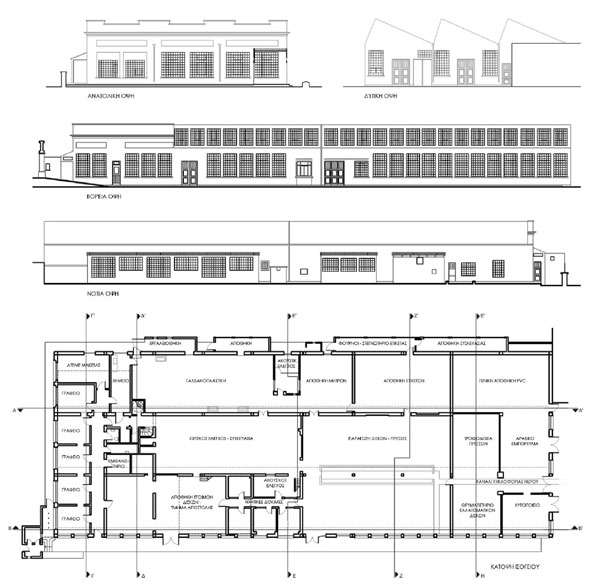
Typology and morphology of building Α.
Building H. Distribution Centre of merchandises.
-it was constructed in 1978 (obvious structure differences from building A)
-holder of concrete organism
-harsh grid 7.80 x 8.20 m.
-columns with dimensions 0.90 x 0.90 m.
-simple sights with any particular characteristics
Today, the space is accommodated by homeless and "free lance artists", which offer a different kind of aspect to its interior.

Building H today.
The space of Columbia complex is globally considered as historical place. The duration of its history, in the passage of time, and the characterization of building A and the central gate as monuments lend a particular character to the space. Consequently, the new usage would be natural to be related with music. The new building program includes spaces as conservatoires, radio station, recording studios, shops and laboratories, exhibit places, spaces of concerts but also a "space memoire" that reports the factory's past.
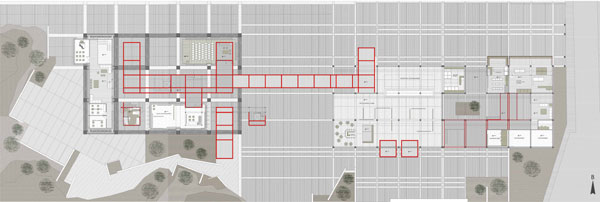
First floor plan.
Basic designing structures
-hold and maintenance of the two buildings
-cashiering the remainder structural elements (roofs and walls)
-appointing the structural system
-adaptation of new uses in harsh grid
The central idea and solution imports a new metal skeleton in the old manufacture, via which achieves the resurgence of the two buildings. This skeleton maintains a soft character in building A, shaping public lofts in various levels. Afterwards the skeleton "passes" in building H, creating a roofed path that connects them with clarity. Finally it takes a more intense character, formatting the existing grid in which the new uses are structured.
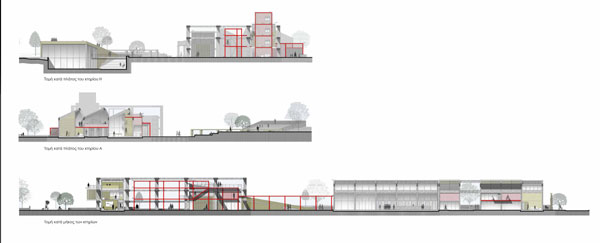
Sections.

Final sights.
It is worth mentioning that the proposed intervention leaves margins for all kinds of modification, such as extension, partial or total abstraction in order to cover future needs. This is an answer to the question why the metal skeleton that contains the new uses, is placed - deliberately - in distance from the preservable holder organism of the existing buildings.

Model 1:100
This process cannot be considered as a tendency with elements of romanticism but it constitutes a new field of reflections that cover needs, it ensures the continuity of historical memory of the city and finally upgrades it.










